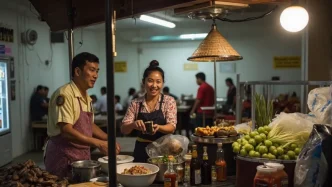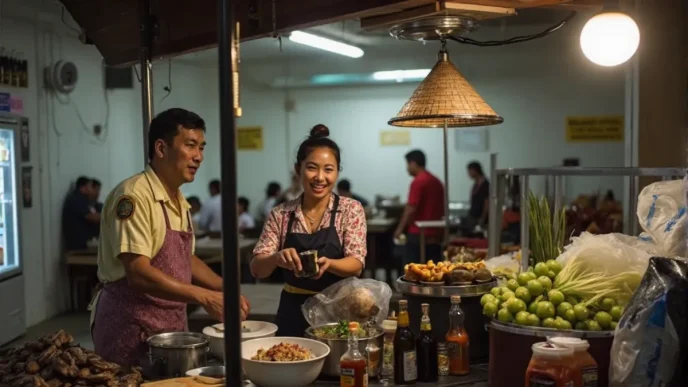South East Asia stands at a potential turning point in its political landscape as of March 2025, with several nations grappling with internal reforms, regional alliances, and public demands for transparency. From Thailand’s evolving democratic processes to Vietnam’s steady governance under the Communist Party of Vietnam (CPV), the region is witnessing a complex interplay of tradition and transformation. This article delves into the latest developments, their implications for regional stability, and the broader geopolitical context, while offering conditional analysis on what these shifts may herald for the future.
Thailand: Democratic Aspirations Amidst Challenges
In Thailand, recent discussions around constitutional amendments have reignited debates over the balance of power between elected officials and traditional institutions. While no specific reforms have been enacted as of March 2025, public sentiment, as reflected in various online discussions, suggests a growing appetite for greater democratic participation. The Thai government has yet to release an official statement on potential changes, but if reforms are introduced, they could reshape the political framework in ways that either strengthen democratic institutions or, conversely, provoke backlash from entrenched powers.
The stakes are high. Thailand’s history of political instability, marked by coups and protests, underscores the fragility of such transitions. If confirmed, reforms that enhance parliamentary authority may bolster public trust, though there is no evidence at present to suggest immediate action. Analysts remain cautious, noting that any shift could also impact Thailand’s role within ASEAN, potentially influencing regional dynamics on issues like trade and security.
Beyond domestic politics, Thailand’s southern regions, home to a multi-ethnic population including Malay-Muslims, continue to face challenges related to historical grievances. Cultural sensitivity in addressing these issues remains paramount, as missteps could exacerbate tensions. The government’s approach—whether through dialogue or policy—will be critical in maintaining stability in this geopolitically significant area.
Vietnam: Continuity with Cautious Openness
In Vietnam, the CPV continues to maintain a firm grip on political life, emphasizing stability and economic progress as of early 2025. Recent policy announcements, though not fully detailed in public domains, hint at incremental reforms aimed at improving governance efficiency. For instance, there are unconfirmed reports of efforts to streamline bureaucratic processes, which, if true, could reduce administrative burdens for businesses and citizens alike. However, no primary source has verified these claims, and they remain speculative at this stage.
Vietnam’s political system, rooted in socialist principles, operates under the umbrella of the Vietnam Fatherland Front, a coalition that aligns various mass organizations with the CPV’s vision. For global readers, it’s worth noting that this structure prioritizes collective consensus over individual dissent, a framework that shapes policy-making in Hanoi. While this ensures continuity, it also limits the scope for rapid political change, a factor that both supporters and critics acknowledge.
If reforms do materialize, they may signal Vietnam’s intent to balance economic modernization with political control, potentially attracting further foreign investment. Yet, without concrete evidence, such outcomes remain hypothetical. The government’s messaging, as reported by state media, continues to emphasize national unity and development, reflecting a cautious approach to any form of liberalization.
Regional Implications: ASEAN and Beyond
The political currents in Thailand and Vietnam do not exist in isolation. As key members of ASEAN, their internal developments have ripple effects across South East Asia. For instance, Thailand’s potential democratic reforms could inspire similar movements in neighboring countries, though they might also heighten tensions if perceived as a challenge to authoritarian models elsewhere. Similarly, Vietnam’s steady governance offers a counterpoint, potentially reinforcing the appeal of centralized systems in the region.
Geopolitically, South East Asia remains a focal point for global powers, with the United States, China, and the European Union closely monitoring these shifts. If Thailand moves toward greater democratization, it could align more closely with Western partners, though this is purely speculative at present. Conversely, Vietnam’s trajectory may deepen ties with China, given shared ideological underpinnings, though economic pragmatism often dictates Hanoi’s foreign policy over strict alignment.
Public sentiment across the region, as gleaned from various online platforms, reveals a mix of optimism and skepticism. While some express hope for more accountable governance, others fear that rapid changes could destabilize fragile economies or social structures. These perspectives highlight the delicate balance leaders must strike in navigating reforms.
Challenges and Opportunities Ahead
Several challenges loom on the horizon for South East Asia’s political evolution. Economic disparities, historical conflicts, and external pressures all complicate the path forward. In Thailand, for instance, any reform process must address rural-urban divides, ensuring that policies resonate beyond Bangkok’s urban elite. In Vietnam, the challenge lies in maintaining public trust while managing expectations for economic growth amid global uncertainties.
Yet, opportunities also abound. If handled with transparency and inclusivity, political shifts could foster greater regional cohesion within ASEAN, potentially positioning South East Asia as a more unified bloc on the global stage. For Vietnam, cautious reforms might enhance its reputation as a stable investment destination, while Thailand’s democratic aspirations, if realized, could serve as a model for peaceful transitions elsewhere.
It must be emphasized that these potential outcomes are conditional. There is no confirmed timeline for reforms in either country, and external factors—such as global economic downturns or geopolitical tensions—could derail progress. The absence of verified data on specific policy changes necessitates a measured approach to analysis, avoiding assumptions of intent or outcome.
Conclusion: A Region in Flux
As of March 2025, South East Asia’s political landscape remains fluid, with Thailand and Vietnam embodying contrasting yet interconnected paths. Thailand’s potential democratic reforms and Vietnam’s incremental adjustments under CPV leadership reflect broader regional trends of balancing tradition with modernity. While the future remains uncertain, the implications of these developments extend far beyond national borders, influencing ASEAN’s cohesion and South East Asia’s role in global affairs.
For now, observers can only watch and analyze, using conditional frameworks to assess what might unfold. Whether these shifts herald a new era of governance or reinforce existing structures, the coming months will be critical in shaping the region’s trajectory. What is clear is that South East Asia’s political story is far from over, and its next chapter promises to be as complex as it is compelling.














